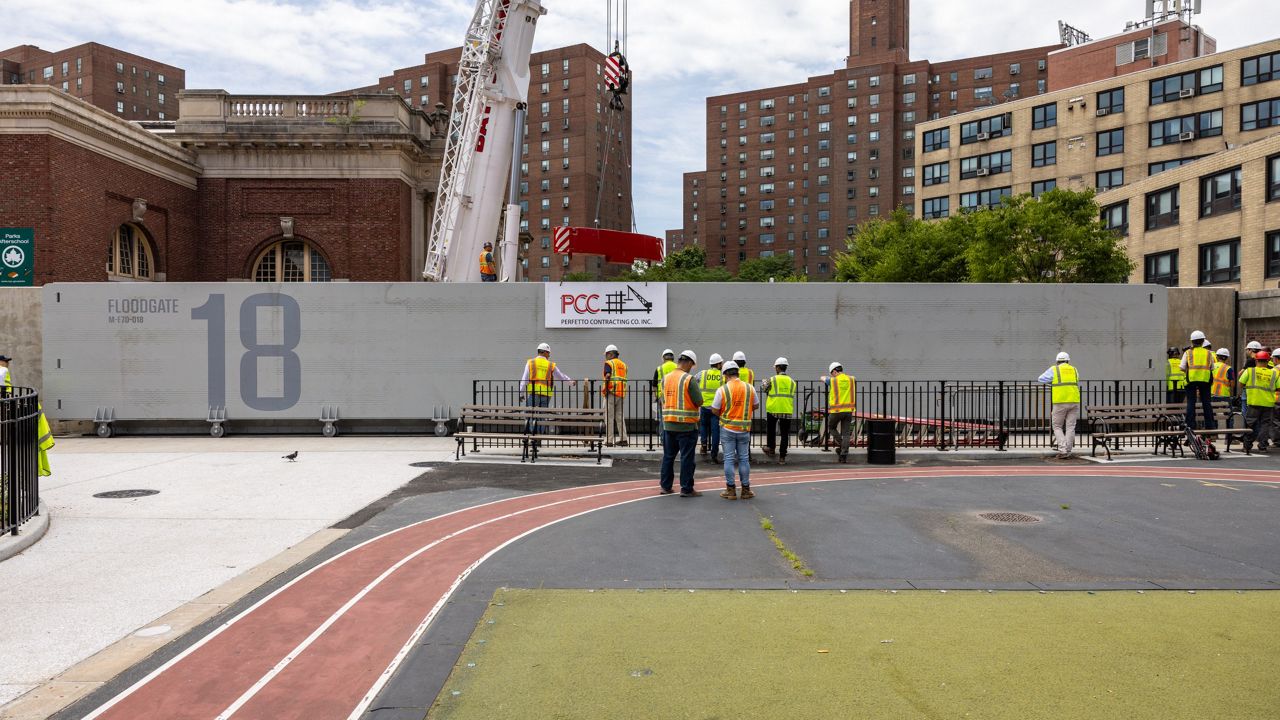The city has officially completed the first part of a major resiliency project that is transforming a long stretch of Manhattan’s east side, reopening a popular park with a newly installed moveable gate that will stop flooding from storm surges.
The new 45-ton, nearly 80-foot long gate at Asser Levy Park will be closed when the city is forecasted to receive major surges of ocean water from coastal storms. The gate rolls on slowly moving wheels, taking a full five minutes lock into place and block off the southern portion of the park, which opens onto East 23rd Street, from potential flooding.
Asser Levy Park is the first of five parks being redesigned or rebuilt for the $1.5 billion East Side Coastal Resiliency project, which is set to provide flood protection for nearly 100,000 area residents.
“This is more than just infrastructure,” Mayor Eric Adams said at a news conference for the park’s reopening Monday. “This is how we're going to protect our city and its people from rising seas and stronger storms.”
The ESCR project also includes the complete reconstruction of East River Park, which will see the park rebuilt on eight feet of fill, with a solid flood wall running the length of the park underground.
The undertaking, scheduled for full completion in late 2026, is “one of the most technically complex resiliency projects anywhere in the world,” Kizzy Charles-Guzman, the executive director of the Mayor's Office of Climate and Environmental Justice, said at the news conference.
The city took years to settle on a climate adaptation plan to protect parts of lower Manhattan that were pummeled by Superstorm Sandy in 2012. The raze-and-raise plan for East River Park has proved controversial, with some activists and local residents protesting the ongoing removal of nearly 1,000 mature trees from the park, and raising concerns about the contents and origins of the dirt fill on which the future park will sit.
Other parts of the ESCR project involve installation of enormous gates similar to the one in Asser Levy Park, including a slightly smaller, swinging gate installed earlier this year in nearby Stuyvesant Cove Park.
Other parts of lower Manhattan are set to get flood gates in the coming years, with a resiliency plan for the Financial District proposing to install rolling flood gates at street entrances to waterfront pedestrian walkways. The Adams administration is tasked with preparing a report, required by a City Council law passed last year, that will determine whether other parts of the city need similar gates.
“We’re looking throughout the entire city,” Adams said. “We’re not leaving any coastal area unchecked.”



